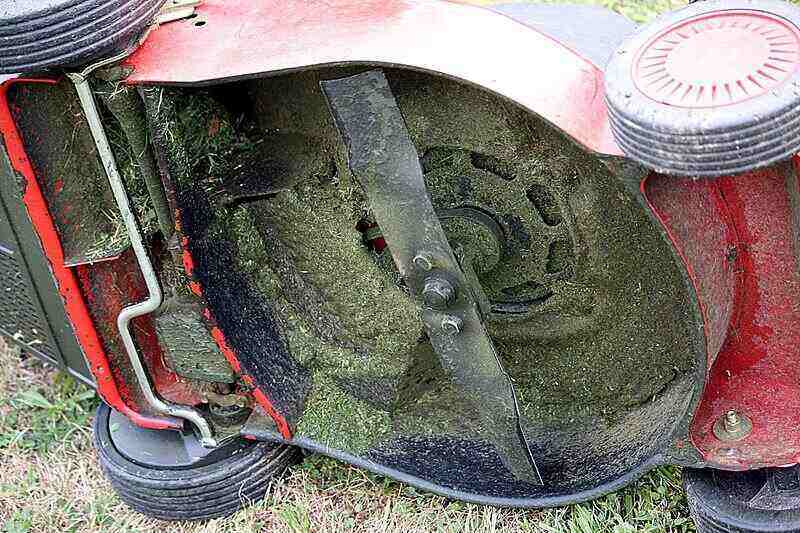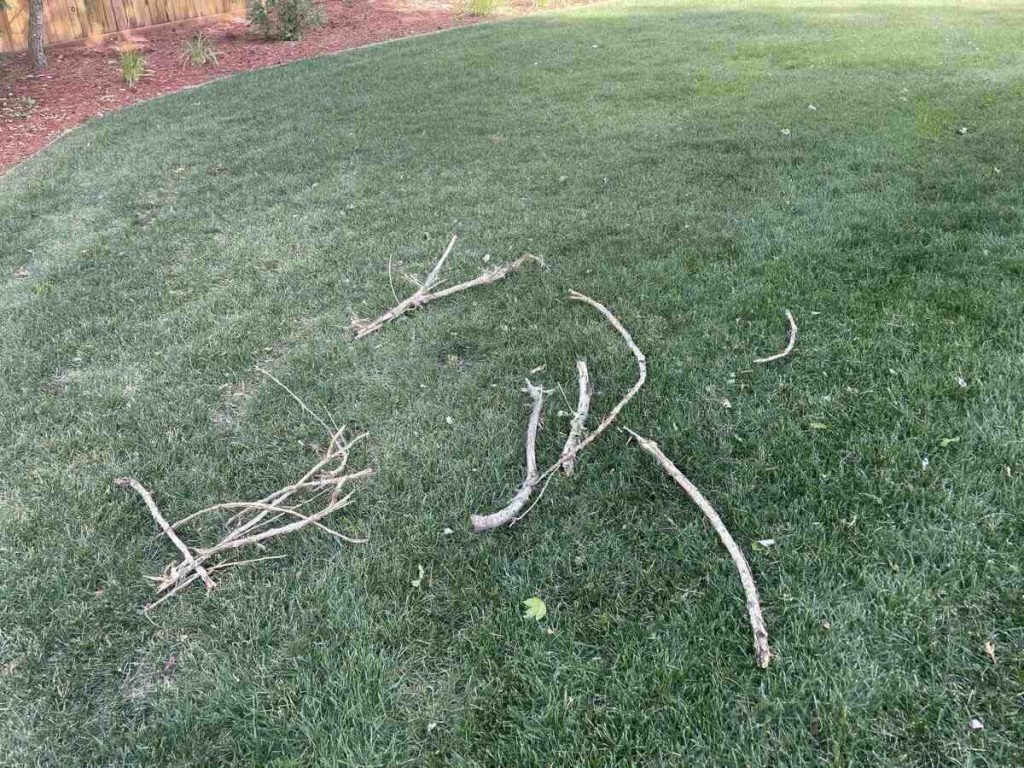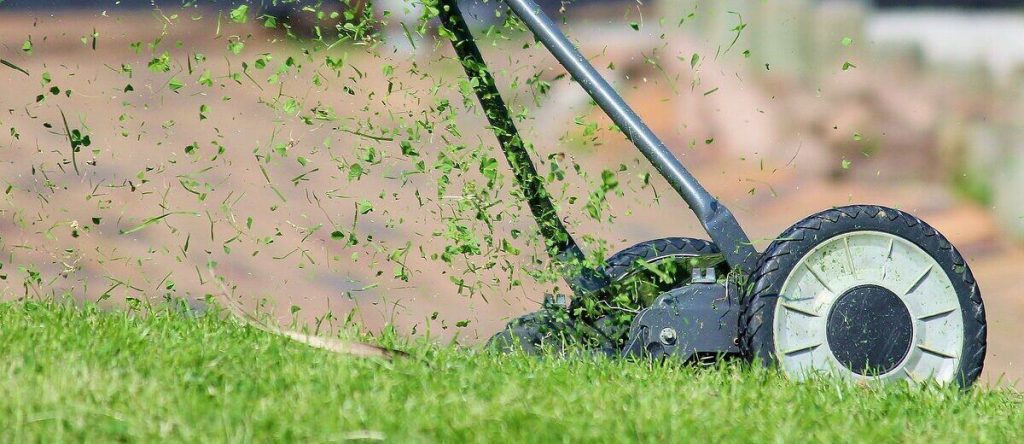How to Mow a Lawn
BY ALISON HOOVER | AUGUST 11TH, 2022 | BLOGKnowing how to mow a lawn properly is crucial to the health of your grass. Cutting the grass might seem self-explanatory, but there are some rules and tricks that will ensure your yard is the envy of the neighborhood. We’ve broken down the process into six steps and included some tips for specific grass types.
Contents:
How To Mow a Lawn in 6 Steps
Not all lawns are alike, and the way you mow your lawn depends on your grass type and the shape and size of your yard. But no matter what kind of lawn you have, following these six steps will keep your grass healthy and thriving:
- Time Your Mow
- Sharpen Your Lawn Mower Blades
- Clear the Area Before You Mow
- Alternate Cutting Patterns
- Cut to the Right Height
- Leave the Grass Clippings on the Lawn
1. Time Your Mow
The time of day you mow is just as important as the season. Mid-morning and late afternoon are the best times to cut your grass.
Avoid mowing at daybreak because the morning dew forces the mower to work harder, and the moisture tears the grass blades. Mowing in the evening can be stressful on your grass as it won’t have time to recover.
Don’t mow after a rain shower either; wet grass will dull the lawn mower blades and can create ruts, uneven cuts, and clumping on your lawn.
2. Sharpen the Lawn Mower Blades

Sharp blades are essential for a clean and easy cut. Dull blades tear your grass, leading to brown grass and increased disease. Sharp blades that cleanly slice through your grass can help it regrow and repair faster.
You can sharpen the blades on your own or hire a professional. If you decide to sharpen them on your own, always remove the mower’s spark plug before you remove and replace the mower blades.
3. Clear the Area Before You Mow

Remove any sticks, garbage, or forgotten toys. Debris can get caught in the mower and fly out, injuring someone or damaging property. Mowing over sticks and other items will wear down your mower’s blades much faster.
Don’t get too close to landscaping elements or children’s play areas. Removing the grass from these locations can be done with an edger or string trimmer. This is much safer and worth the extra time.
4. Alternate Cutting Patterns
Cutting in the same pattern every time you mow compacts the soil and flattens the grass blades. This prevents the lawn from getting enough water and air, ultimately halting growth.
Alternating mowing patterns can be as simple as cutting east to west one week and north to south the next. This is also an opportunity to get creative and stripe your lawn or create a checkerboard pattern and make it look like an MLB playing field.
Want the look of a baseball field without all the work? We can help you find a lawn care professional to stripe and design patterns in your lawn.
5. Cut to the Right Height
Check your mower’s height before starting. Place your mower on a flat and firm surface and measure up from the ground to your mower blade. Set the lever to the desired height. You’ll find the desired height for each grass type in the table below.
When your grass reaches 3-5 inches tall, you should cut it down incrementally instead of all at once. It’s best to cut your grass by a third of its height each time. This is known as the one-third rule.
Following the one-third rule helps keep your grass green, prevents soil compaction, and increases your lawn’s defense against pests and disease. Cutting to the right height also limits injury to the crown of the grass blades, where nutrients are stored.
6. Leave the Grass Clippings on the Lawn

Grass clippings are an excellent mulch for your lawn. The chopped grass blades act as a natural fertilizer and return nitrogen to the soil, so don’t bag them. Contrary to popular belief, grass clippings do not contribute to lawn thatch.
Mowing Warm-Season vs Cool-Season Grass Types
Cool-season grasses tend to sprout faster than warm-season grass types, but the mowing frequencies and heights vary according to the species.
Warm-Season Grasses
Warm-season grasses begin to grow as the weather hits 65° and thrive in temperatures between 80 and 95 degrees. These types of grasses grow fastest during the summer.
Here’s the recommended height for common warm-season grasses and how often they need mowing.
| Warm-Season Grass | Recommended Height | Recommended Mowing Frequency |
| Buffalograss | 2” – 3” | weekly |
| Dichondra | 1.5” – 2” | bi-weekly |
| Centipede Grass | 1” – 1.5” | every 5-7 days |
| Zoysia | 1.5 – 3” | every 7-10 days |
| Bermudagrass | 1” – 1.5” | every 5-7 days |
Cool-Season Grasses
Cool-season grasses begin to grow as the weather reaches 60° and enjoy temperatures between 60° – 75°. This means the peak growing season is in spring and fall. When growth slows during the summer, you may only need to mow every other week.
| Cool-Season Grass | Recommended Height | Recommended Mowing Frequency |
| Perennial Ryegrass | 1.5”- 2.5” | every 5-7 days |
| Tall Fescue | 2” – 3” | every 7-10 days |
| Kentucky Bluegrass | 2.5“ – 3” | weekly |
| Red Fescue | 3 – 3.5“ | every 7-10 days |
Mowing Tips
In addition to the six steps listed above, these mowing tips will help make sure you mow your lawn properly:
- Find the Right Mower
- Don’t Mow Too Often
- Mowing New Grass
1. Find the Right Mower
Finding the right lawnmower is one of the best ways to make lawn care easier. Consider the amount of money you want to spend, the size of your yard, and specific conveniences you’d like.
- Mulching mowers: The best mulching mowers cut the grass finer, so it decomposes faster.
- Riding mowers: These mowers are good for larger and hilly lawns.
- Reel mowers: Inexpensive and good for small, flat lawns. Reel mowers also cut down on fuel costs.
- Zero-turn mowers: Excellent for yards with a lot of hardscaping. Zero-turn mowers can also save your flower beds.
- Gas-powered mowers: Great for expansive and challenging lawns. Gas-powered mowers are the most popular.
- Cordless electric mowers: Run on batteries and are well-suited for medium-sized properties.
2. Don’t Mow Too Often
Most lawns should be mowed once a week, but some should be cut bi-weekly especially cool-season grasses that grow quickly during the spring and fall. Slower growing lawns should be cut every 7 to 10 days. To conserve water, mow less often during a dry spell.
The one-third rule is the best gauge for how often to mow your grass. Frequency is a balance between the health of your grass and the look of your lawn. Grass is a sensitive plant, and mowing too often can diminish its ability to thrive.
3. When to Mow New Grass
It’s tempting to mow new grass as soon as you see it sprout, but that can damage the lawn. Once the new grass hits an inch above the recommended mowing height, you can give your new lawn a cut.
If you wait long enough, that first mow can help you grow a robust and healthy lawn with less risk for soil compaction.
Safety When Mowing
Nearly 7,000 people a year are injured by lawn mowers. These injuries can be avoided by adhering to basic safety rules, including:
- Wear eye and hearing protection, gloves, and long pants and shirts.
- Tie back long hair and remove loose jewelry.
- Clear debris from your yard before mowing
- Adjust the cutting height before you turn the mower on, and never stick a hand or foot inside the mower while it’s running.
- Have your mower serviced every season.
- Avoid mowing wet grass.
- Never refuel your engine while the mower is running or the engine is hot.
- Don’t pull the mower backward. Always cut by pushing the device forward.
- Move up and down on a slope, never across.
- If you use a riding mower, never let anyone else sit on the mower with you.
FAQ
- Should I edge before or after I mow?
It really doesn’t matter. Most people find it best to mow first as it cleans up the majority of growth and makes it easier to see the edging.
Some people find it better to edge first, so you have a better view of the landscaping and other obstacles. This can make it easier to avoid them while mowing.
- How much should I overlap with each mowing pass?
Typically you will overlap by a few inches, but it depends on the width of your mower’s deck. Overlap as much as needed to ensure you don’t miss any spots.
- What should I do if the grass is overgrown?
Start with a string trimmer or weed eater and remove about one-third of the growth. Repeat this process a few days later, and then use a mower to reach the desired height.
Worried about safety, mowing correctly, or finding the right tools? We can help you find a lawn care professional to take care of all your mowing, edging, trimming, and mulching.
Main photo credit: Brenda Stuart | Wikilawn